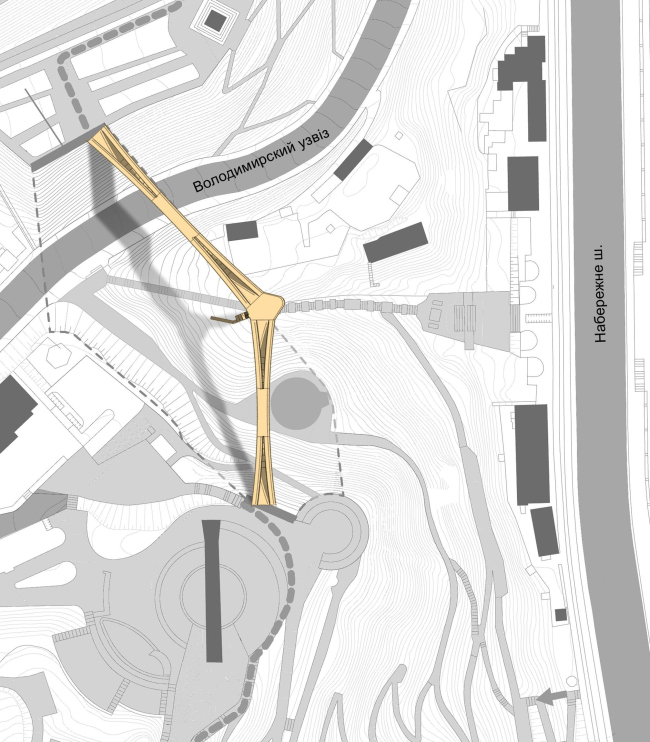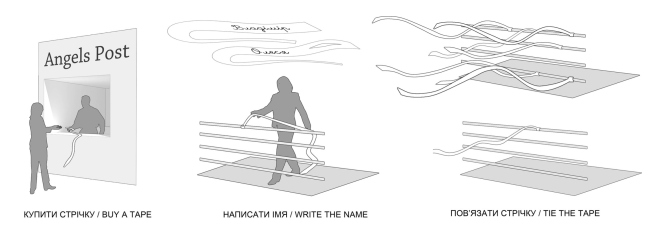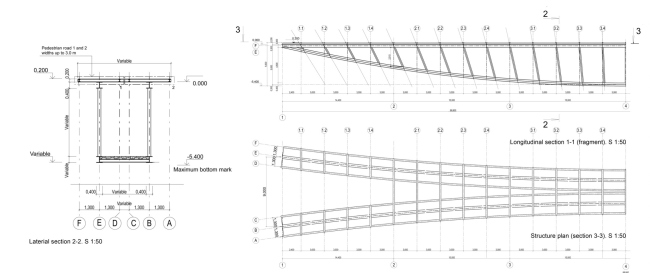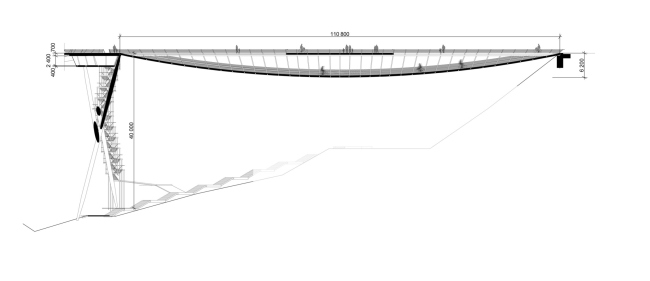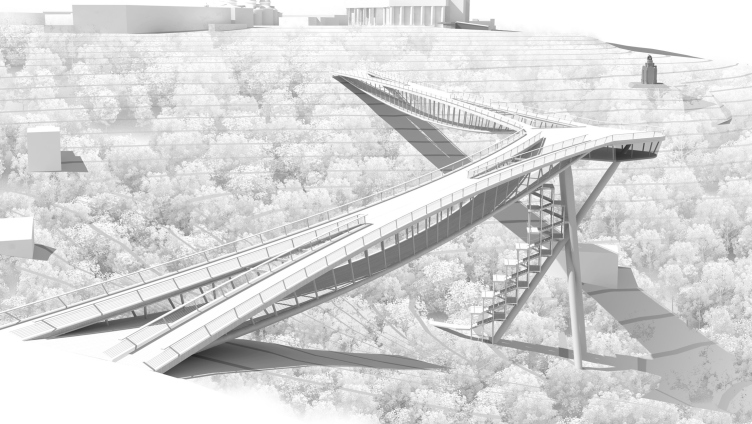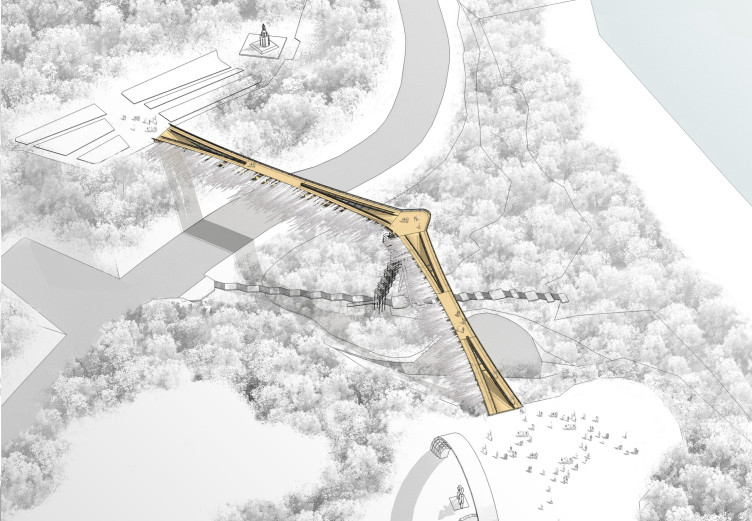The new bridge will link
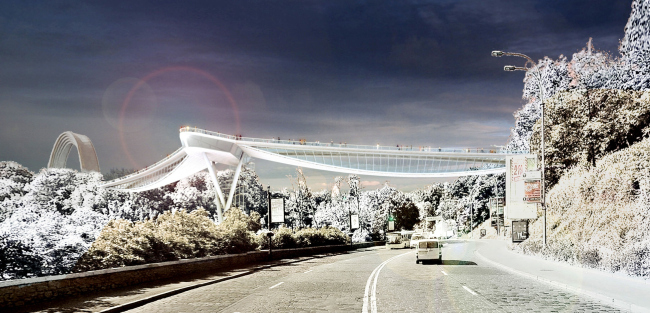
The "angel" touched the ground in three
points - with the tips of his wings and with his intermediate support that
connects it to the center of "Kreschaty" Park. The support not only
shortens the span of the bridge and changes its direction but also helps one to
get as soon as possible from both parks to the
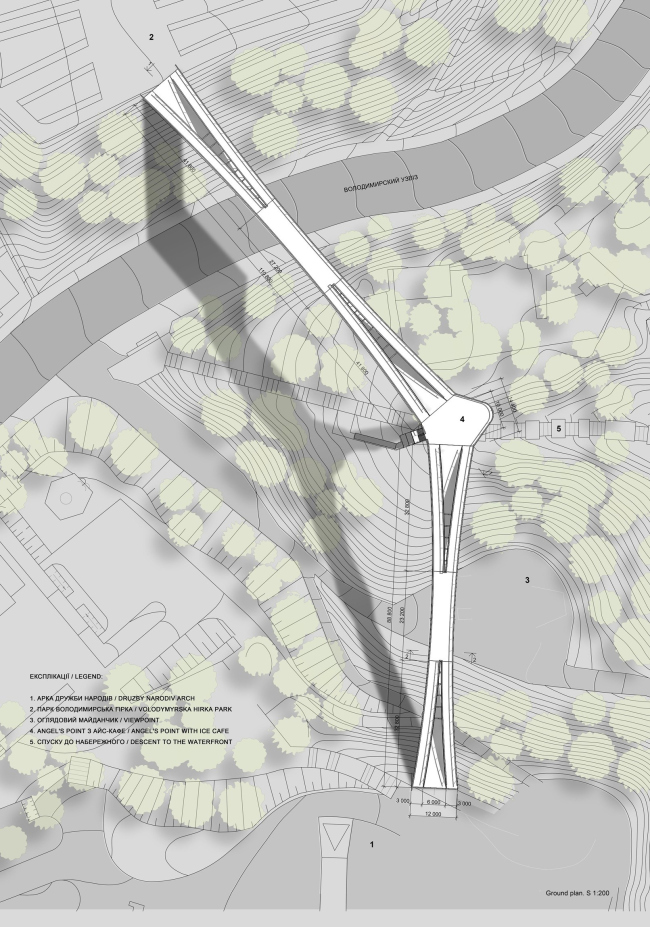
The "wings of an angel" have a span of 89
and 111 meters respectively, each of them consisting of two girders bent
vertically and horizontally to ensure spacial stability. Over the upper girder
belt that looks like strongly elongated "X's" on the layout, there
runs a pedestrian route, while over the lower girder belt that forms smooth
arches, a more "extreme" route is laid, with a level difference, that
is meant for cyclists, rollers, skaters, etc. By using this solution, the
architects get the best of both worlds: on the one hand, the flows of the
pedestrians and the cyclists are separated for the better part of the route,
which ensures their safety, and on the other hand, it helped to render the
silhouette of the bridge less dramatic at the expense of the
"sagging" of the lower part and give the new construction a certain
resemblance with the Arch of Friendship of Peoples.


Treating the intermediate support as the
"body" of the angel, the authors use it for placing an extra volume
that is meant to make the bridge even more attractive for the city population
and tourists. On the layout, this volume has a shape of a slightly elongated
hexagon, and it serves as a counterpoint of sorts where the people flows,
coming from both sides, inevitably meet. On its top level, a sightseeing
platform, named "Angel's Point" is created, commanding one of the
most beautiful views of the city, while below it, the ice-cafe "Angel"
is organized, where one can partake of the "food of the gods". The
Asadov's architectural and "marketing" ideas do not end at this point
though - the architects propose to place here what they call "Angel's
Post". Here, according to the authors' plan, one will be able to buy a
snow-white ribbon, make a wish, and, in token of addressing the angel, tie the
ribbon to the railing of the bridge. "We think that such a tradition will
appeal to the city people and that it will stick, which, in turn, will ensure
for the image that is constantly changing and is constantly enriched" -
says on of the authors of the project Andrew Asadov. The architect confesses:
such ideas were basically not provided for in the specifications, but the very
task of the contest - to develop not so much the structural design of the
bridge, but rather a concept, or, if you want, ideology of connecting the two
formerly absolutely self-sufficient parks, pushed them to developing
out-of-the-box scenarios that would ensure the appeal of the place to the city
people and meant to stress its status as a new attraction of Kiev.
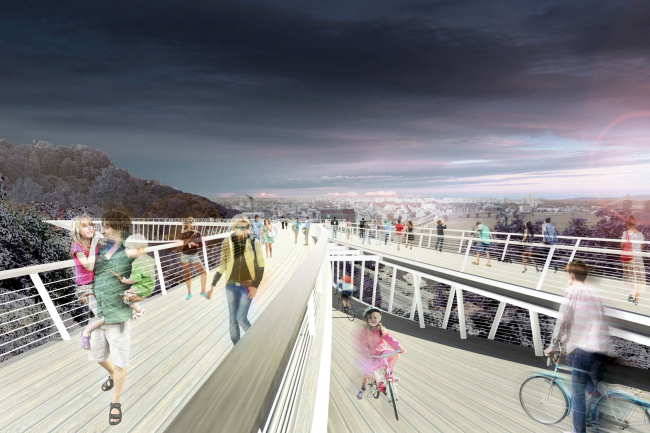
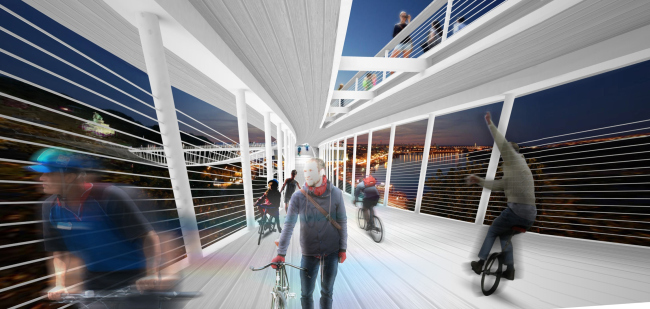
Trying to minimize the use of lifting cranes and other
heavy machinery, "Asadov Architectural Bureau" paid special attention
to the scenario of the construction priorities. First, the central support with
the cafe landing and a staircase is installed, then, between the support and
the end landings, the temporary cable-stayed structures are built, upon which,
in turn, the falsework for mounting the girders is installed. First, the bottom
girder belt is assembled on the principle of flexural rigid thread, which can
be assembled both from composite l-beams, as well as from reinforcing bars.
After that, the upper belt with braces is installed, as well as the cross beams
between the girders. The project provides for the bridge being finished with
the decking plank of natural wood - as we remember, the bridge connects two
parks and must be kin to them to a certain degree - while its main construction
elements will be painted, according to the plan, the color of white, which,
according to the architects, will help the new structure to fit in with the
surrounding city panoramas as best as possible.
For all its simplicity and rationality, the Asadovs
bridge can also boast an expressive and dramatic appearance and interesting
architectural and planning design that promises to turn the trivial overpass
from one park to another into an exciting architectural event.
